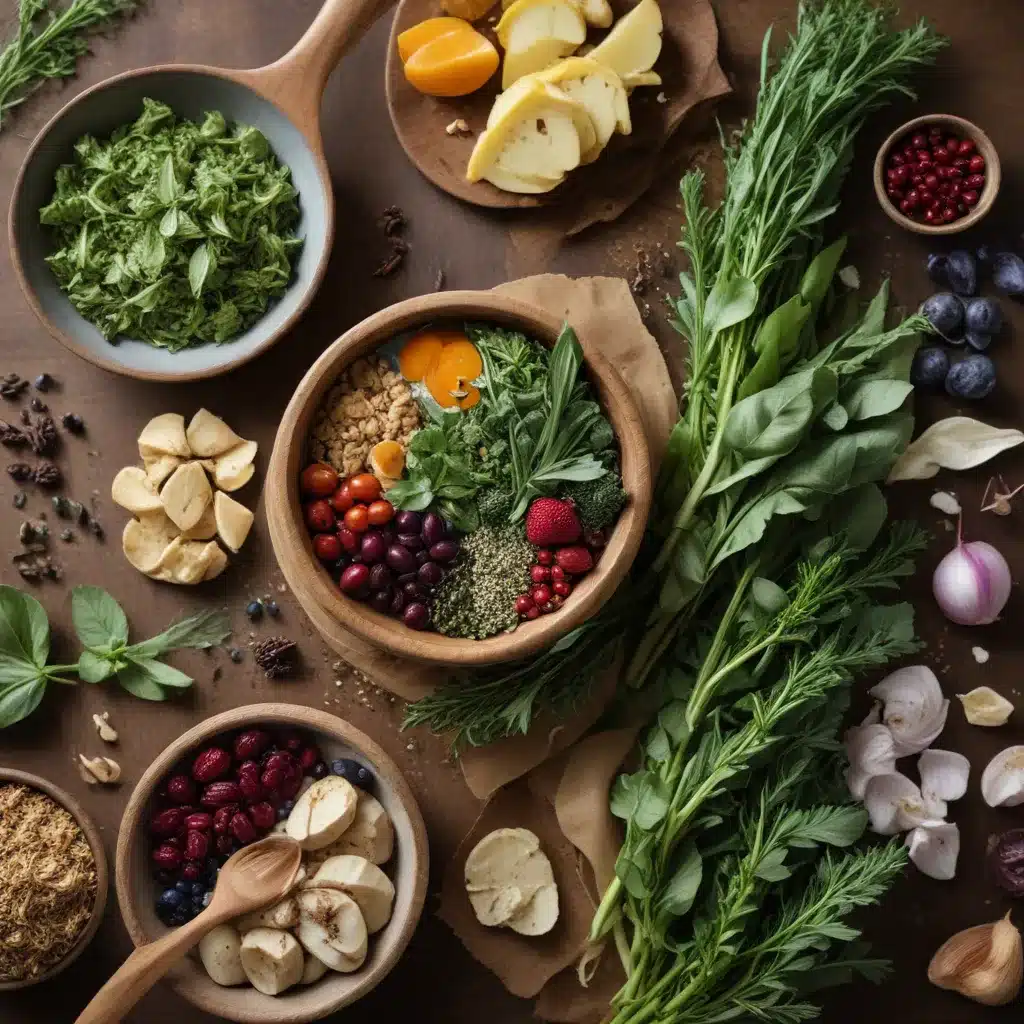
As a seasoned culinary expert who has dedicated my life to the art of fine dining, I’ve come to cherish the role that sustainably-grown ingredients play in elevating the dining experience. With my extensive experience in California cuisine and wine, I’ve witnessed firsthand how thoughtfully-sourced, seasonal ingredients can transform a meal into a sensory revelation.
The Life-Changing Loaf and the Allure of Natural Grains
One of the most profound culinary awakenings in my career was discovering the “Life-Changing Loaf of Bread” recipe. As I sank my teeth into that first slice, I was struck by the depth of flavor and satisfying texture – a far cry from the often bland and lifeless store-bought varieties I had resigned myself to in the past. The secret, I soon learned, lay in the intentional sourcing and preparation of the whole grain ingredients.
Unlike commercial breads that rely on refined flours stripped of their nutritional value, this artisanal loaf embraced the inherent richness of nuts, seeds, and oats. By allowing these elements to soak and meld together, the recipe unlocked a world of complex, earthy notes that danced across the palate. It was a revelation that challenged my preconceptions about what bread could be.
As I delved deeper into the story behind this transformative bread, I was struck by the thoughtful attention paid to each step of the process. The use of psyllium husks, for instance, not only lent structural integrity but also offered remarkable digestive benefits through its soluble and insoluble fiber content. This holistic approach to ingredient selection was a hallmark of the recipe’s author, Sarah Britton, whose reverence for whole, unprocessed foods resonated deeply with my own culinary philosophy.
Fostering Connections Through Seasonal Eating
Britton’s emphasis on seasonality and locality in her bread recipe mirrored my own experiences at Chez Panisse, the renowned restaurant I founded in Berkeley, California. From the very beginning, my mission was to celebrate the bounty of the region by forging close relationships with local farmers, fishermen, and ranchers. These partnerships allowed us to source the freshest, most flavorful ingredients, which in turn inspired the ever-evolving menu.
As I explained to NPR’s Terry Gross, this focus on local, sustainable producers was not merely a means to an end, but a reflection of my deeper beliefs about the role of food in our lives. I saw the table as a place where community could be nurtured, where conversations about the world could unfold, and where a profound connection to the land and its caretakers could be cultivated.
By championing the farmers and artisans who devoted themselves to responsible stewardship of the earth, I hoped to inspire a reverence for the natural processes that yield such extraordinary bounty. Whether it was the heirloom tomatoes bursting with summer sunshine or the tender spring greens that seemed to distill the essence of the season, each ingredient became a vessels for storytelling – a means of honoring the cycles of nature and the human hands that coaxed forth their flavors.
Embracing the Beauty of Simplicity
This appreciation for simplicity and authenticity extended beyond the sourcing of ingredients to the very presentation of the dishes themselves. As I shared with Gross, my approach to cooking was rooted in a desire to “let them be themselves” – to showcase the inherent beauty and flavor of each element without heavy-handed manipulation.
This philosophy resonated with other culinary pioneers, like Amy Chaplin, whose whole food-focused recipes and techniques have inspired a new generation of health-conscious home cooks. Chaplin’s reverence for seasonal, plant-based ingredients mirrors my own, as does her commitment to empowering people to reconnect with the nourishing power of real food.
Through podcasts like “Simple Farmhouse Life,” I’ve also encountered kindred spirits who share my vision of food as a pathway to greater self-awareness and community. These hosts speak to the importance of slowing down, savoring the moment, and celebrating the small, daily rituals that root us in the natural world. Their perspectives have reinforced my belief that the most memorable meals are those imbued with intention, authenticity, and a deep respect for the ingredients themselves.
Cultivating a New Culinary Consciousness
As I reflect on my four decades at the helm of Chez Panisse, I’m heartened to see how the ideas I championed have taken root and blossomed across the culinary landscape. The proliferation of farmers’ markets, community gardens, and farm-to-table movements are a testament to a growing public appetite for food that nourishes both body and soul.
Increasingly, diners are seeking out restaurants and producers who can tell a compelling story about their ingredients – one that speaks to provenance, sustainability, and a reverence for traditional foodways. This shift in consciousness represents a fundamental re-evaluation of our relationship to what we consume, driven by a desire for greater transparency, authenticity, and connection to the natural world.
By championing the artistry of sustainably-grown ingredients, I believe we can not only elevate the dining experience, but also cultivate a more harmonious and regenerative food system. It is a vision that extends far beyond the bounds of my own restaurant, touching the lives of eaters, growers, and communities near and far. And it is a vision that I remain deeply committed to upholding, through my work, my writing, and my ongoing collaborations with like-minded culinary innovators.
As we celebrate the 40th anniversary of Chez Panisse, I am reminded of the profound potential that lies within each bite of food – the power to nourish, to heal, to inspire, and to forge lasting connections. It is a responsibility that I have embraced wholeheartedly, and one that will continue to guide me as I explore new frontiers in the world of sustainable, sensory-driven cuisine.

